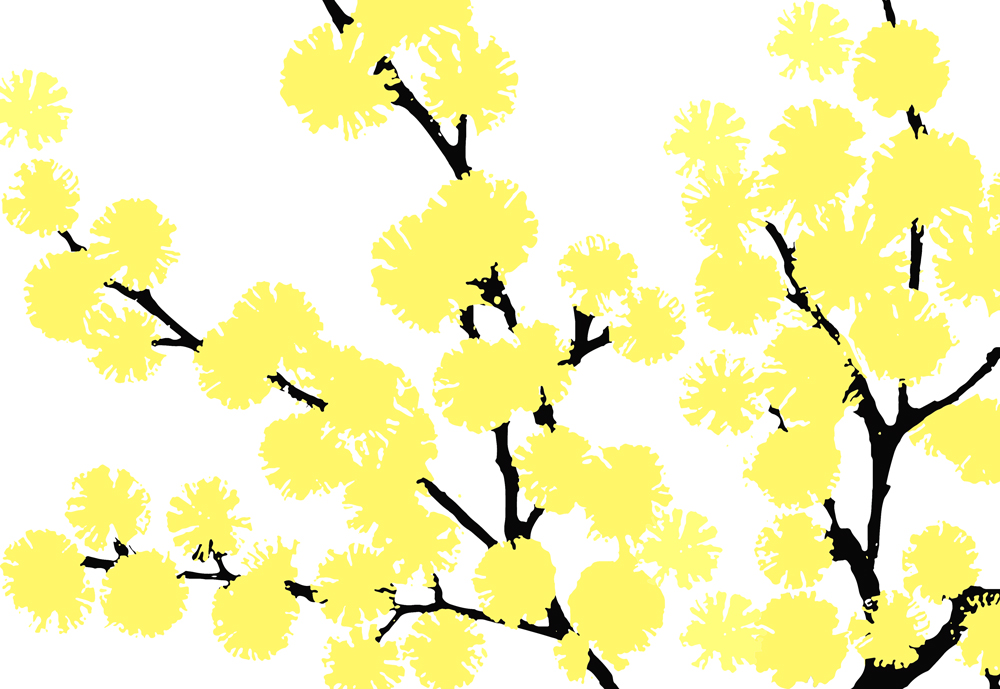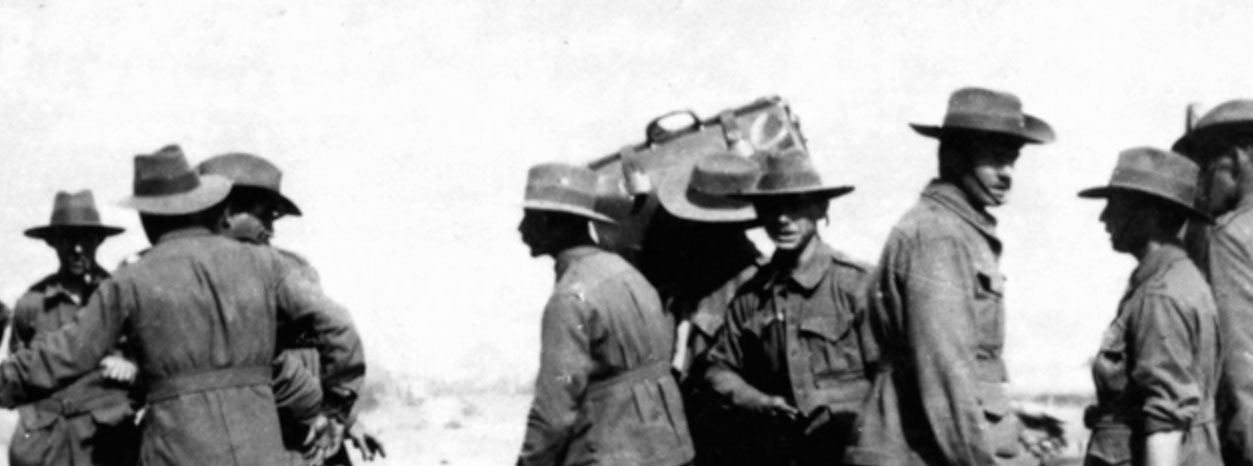The First World War erupted in Europe on 4 August 1914. Across Australia the call to arms was sounded. By the end of the year more than 50,000 young men and nearly 300 women had leapt to support the British Empire. Families waved farewell to their sons and daughters, husbands, brothers, sweethearts and friends. Then they waited anxiously for news from Gallipoli, Turkey – the place of Australia’s first active service in the war.
Many thought the war would be over by Christmas 1914, but it carried on. Wounded men returned home and troops moved from Gallipoli to the trenches of the Western Front and the heat of the Middle East. Even after the fighting had stopped on 11 November 1918, the cost of war continued for those at home.
For the returning troops, the appalling conditions they had endured and the terrors they had witnessed left many physically and mentally traumatised for the rest of their lives. At the same time, families of the deceased struggled with their grief and the realities of life without their loved ones.
Remembering the First World War presents a selection of Museum of Brisbane commissioned projects by artists, photographers and filmmakers, to share the war experiences of service people who enlisted through primary documents such as photographs, diary entries and letters.
Still image from Facing World War One: Stories of loyalty, loss and love.
Stories of loyalty, loss and love
Young men from all walks of life left Brisbane to fight in the First World War. Whether driven by patriotic fervour, a sense of adventure or out of economic necessity, they said farewell to home, family and friends. Few who enlisted knew what lay before them – a brutal war like none other fought before.
Facing World War One: Stories of loyalty, loss and love presents the war experiences of a selection of men who enlisted in Brisbane. Through the letters written by their loved ones to the Australian Imperial Force Base Records in Melbourne, this filmic presentation is an intimate revelation of the human impact of war on those who enlisted and those who awaited their return.
The correspondence shows that, as the war lingered on, there was an emotional shift from loyalty to Australia, to dealing with considerable loss and, ultimately, to the endurance of love. Listen below.
Facing World War One: Stories of loyalty, loss and love | Duration: 33mins 20secs | Creative Producers: Karen Donnelly, Tony Nott, Raimond De Weerdt, Writer: David Williams, Narrator: Andrew Rodoreda, Camera: Andre Castaldi, Sound: Adam Boon, Actors: Tracey Bodsworth, Asaiah Carney, Greg Clarke, Wendy Donnelly, Paul Gibbs, Rachel McNamara, Nic Ross, Joseph Thomsen, John Walker, Leon Walsh, Colin Watson, Jeryl Watson, Amos Jon Wilksch.
Letters from the War
Desperately seeking news
Anxiety levels among those at home understandably increased when there was an absence of news from loved ones. With mail taking over two months to arrive, family and friends turned to Base Records for news. Base Records was the records office of the Australian Imperial Force (AIF). All enquiries regarding the men and women who had left Australia were to be sent to the one location, Victoria Barracks in Melbourne, where a copy of every soldier’s attestation papers was stored. On average, more than 1,000 letters a day were received by Base Records. Despite the stressful and painful circumstances, these formal and usually patient letters are an intimate revelation of the attitudes and daily worries of those at home.
From October 1914 to December 1921 Base Records sent out:
-
1,495,135 letters
-
163,840 telegrams
-
4,809 cable messages
-
31,608 parcels
-
60,000 War Graves Commission pamphlets
-
25,000 notifications about honours, awards and mentions
-
8,000 bronze oak leaves to those Mentioned in Despatches.

Faces from the War
The organisation Facing Australia creates photographic and video works that reflect upon identity, place and community which contribute to national memory, informing who we are and who we were. The work of Facing Australia challenges anecdotal perceptions about the Australian identity.
The Face of the Australian Imperial Force (AIF) (2016) and the Face of the Australian Army Nursing Service (AANS) (2016) are a visual interpretation of all the men and women who served in the First World War. 100 portraits of these men and women were specifically selected and precisely layered, one over the other, to create the composite portraits.
The Tomb of the Unknown Soldier at the Australian War Memorial in Canberra is inscribed with the words, “He is all of them, and he is one of us”. The composite portraits of the AIF and AANS are Facing Australia’s homage to these words and those men and women of the First World War.
These images were created by Facing Australia for Museum of Brisbane’s exhibition Facing World War One: Stories of loyalty, loss and love on display at Museum of Brisbane between 22 April – 28 August 2016. The exhibition was supported by funding from the Australian Government under the Anzac Centenary Local Grants Program.
Australians in the First World War
Often the most personal reminders of those who went to war were studio portraits of soldiers and nurses in uniform.
It was common for servicemen and women to have their portraits taken to give as gifts before they departed, or to send later to friends and family at home. They were often prized possessions, and in many homes this was the only photo – and sometimes final reminder – of a beloved. These portraits were generously supplied following a 2016 community call out by Museum of Brisbane for portraits of the men and women who served in the Australian Imperial Force (AIF) and Australian Army Nursing Service (AANS).
We would love to see your studio portraits of relatives involved in the First World War. Tag @museumofbrisbane on social media to share your photos.


The Wattle | Our Flower
Officially proclaimed our national floral emblem in 1988, the wattle has been used as a symbol of Australia since before the Federation of our nation in 1901. Our sporting colours of green and gold are drawn from the colours of the wattle.
During the First World War the wattle took on more meaning than just patriotism. It came to represent home to those serving overseas, with soldiers sent wattle sprigs while away serving in the war. Wattle also became a way to remember loved ones who were serving. Wattle sprigs and badges featuring stylised wattle were sold to raise money in support of the war effort and were worn in memory of those who had died and those still serving.

Greer Townshend: Here I Came to the Very Edge
Greer Townshend is a Brisbane-based artist whose paper sculptures often refer to notions of fragility and memory. In her works, Greer employs drawing techniques, origami (paper-folding), and kirigami (paper-cutting) to craft miniature interior worlds illuminated by soft light. Greer’s artworks often tell a story, but also evoke memories and explore layers of the subconscious.
Throughout her 2017 Q ANZAC 100 Fellowship at the State Library of Queensland, Greer researched the experience of soldiers and servicepeople during the First World War. Accessing photographs, letters and diaries from the library archive offered Greer deeper insight into the lives of Queensland soldiers, reverends and other wartime workers. Greer continues to translate these stories into her artworks today. Her works encourage us to remember and reflect upon the profound effect of war on soldiers and servicepeople.
Private Herbert Mallyon (Forest) 2020
This artwork by Greer Townshend depicts Private Herbert Mallyon, a young stretcher-bearer from Springsure, Queensland, who was stationed in France during the First World War. Access to Private Mallyon’s personal diaries through the State Library of Queensland allowed Greer insight into his wartime experiences, including the Battle of Deville Wood at the Somme, France in 1916, the event upon which this artwork is based. Describing this battle, Private Mallyon wrote:
Deville Wood where the fierce battle was fought sometime previous has been a death trap for both the enemy and ourselves. Bodies stay lay there unburied in great numbers. It is a horrible sight. The wood itself is nothing but a mass of charred broken timber.
Greer was moved by Private Mallyon’s account, and was interested in the consistent reference to the destruction of nature throughout his diaries. As an archetypal image, the forest represents the unconscious, and conjures up the “hero’s journey”, as well as folklore involving magic, danger and immortality. In Private Mallyon’s case, it also refers to the lush forests surrounding his hometown—in stark contrast to the destruction he saw at war. Private Mallyon died in action in 1917, while serving on the Ypres Front in Belgium. His comrades from the 15th Australian Field Ambulance wrote to his mother expressing their grief:
Each one of us looked upon him as a tower of strength during the whole of his active service & it is not surprising that his loss is so deeply felt among us.
View the primary documents Greer used to develop this artwork in State Library of Queensland’s catalogue.













